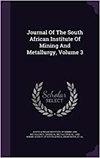A proposed method for optimizing coal pillar design using coalfield-specific uniaxial compressive strength
IF 0.9
4区 材料科学
Q3 Materials Science
Journal of The South African Institute of Mining and Metallurgy
Pub Date : 2023-07-13
DOI:10.17159/2411-9717/2063/2023
引用次数: 0
Abstract
The research described considers whether the variability in coal material strength, as derived through a series of uniaxial compressive strength (UCS) tests, could be used to indicate the variability in coal pillar strength. The aim is to be able to use a distribution of UCS tests as input into the coal pillar strength calculation. This will allow the pillar design to be expressed in terms of a probability of failure rather than as the commonly used safety factor. To achieve this, the bulk strength factor associated with commonly used pillar strength formulae was replaced with a distribution of UCS results divided by an adjustment factor. The factor was determined so as to ensure that the resulting bulk strength does not deviate from the statistically determined bulk strength published in the original formulae. This approach enabled pillar strength distributions to be obtained using industry-accepted strength formulae, subsequently allowing for a probability of failure to be calculated for a specific pillar design. Using a regional coal material strength curve as a baseline, coalfields in which the coal is stronger than the regional mean can be identified and the pillar designs optimized. This is based on the stronger coals achieving lower probabilities of failure at similar safety factors. The research has considered actual UCS data from multiple mines in the Mpumalanga coalfields of South Africa, and has proved that the variability in material strength between coalfields could allow for some optimization using the proposed approach. Based on the data used in the study, a 2.78% increase in extraction could be achieved. However, further research will be required to validate the results of the study in an underground environment.一种利用煤田单轴抗压强度优化煤柱设计的方法
该研究考虑了通过一系列单轴抗压强度(UCS)试验得出的煤材料强度变异性是否可以用来指示煤柱强度的变异性。目的是能够使用UCS测试的分布作为煤柱强度计算的输入。这将允许柱设计以失效概率来表示,而不是作为常用的安全系数。为了实现这一目标,将与常用矿柱强度公式相关的整体强度因子替换为UCS结果除以调整因子的分布。确定该因子是为了确保所得的体强度不会偏离原始公式中公布的统计确定的体强度。这种方法可以使用行业公认的强度公式获得矿柱强度分布,随后可以计算出特定矿柱设计的失效概率。以区域煤质强度曲线为基准,识别煤质强度大于区域平均值的煤田,优化煤柱设计。这是基于在相似的安全系数下,较强的煤具有较低的失效概率。该研究考虑了来自南非Mpumalanga煤田多个矿井的实际UCS数据,并证明了煤田之间材料强度的可变性可以使用所提出的方法进行一些优化。根据本研究使用的数据,提取率可提高2.78%。然而,需要进一步的研究来验证在地下环境中的研究结果。
本文章由计算机程序翻译,如有差异,请以英文原文为准。
求助全文
约1分钟内获得全文
求助全文
来源期刊
CiteScore
1.50
自引率
11.10%
发文量
61
审稿时长
4-8 weeks
期刊介绍:
The Journal serves as a medium for the publication of high quality scientific papers. This requires that the papers that are submitted for publication are properly and fairly refereed and edited. This process will maintain the high quality of the presentation of the paper and ensure that the technical content is in line with the accepted norms of scientific integrity.

 求助内容:
求助内容: 应助结果提醒方式:
应助结果提醒方式:


